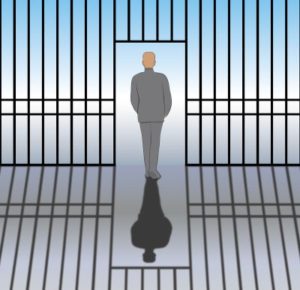What are some examples of the Supreme Court granting bail under the Bail Act?
Director of Public Prosecutions (NSW) v Tony Mawad [2015] NSWCCA 227
What were the facts of this case?
On 1 October 2014, Tony Mawad was arrested and refused bail. Mr. Mawad was charged with two counts of armed robbery and a firearms offence as a result of his alleged involvement with an armed robbery of a home improvement store. On 23 July 2015, Mr. Mawad was granted bail on strict conditions.
At the time of the alleged offence for which this matter occurs, Mr. Mawad was on bail for a prior charge of aggravated break and enter with intention to commit a serious indictable offence.
Law:
A detention application has been brought under section 50 of the Bail Act 2013. Under section 16A there is a show cause requirement for serious offences. Given the nature of the offences and the fact he was on bail at the time of the alleged offence, it will be required that Mr. Mawad show cause to be granted bail – section 16B.
If cause can be shown, then in accordance to DPP v Tikomaimaleya the court is to assess whether there are any bail concerns (section 17), having regards solely to the matters in section 18.
If such bail concerns exist, then it must be determined whether there is an unacceptable risk of those concerns materialising – section 19.
The Crown Case relied on police affidavits to counter the submissions made to show cause on which the Court relied on section 31 of the Bail Act to consider the evidence. However, the absence of any real detail setting out the basis for the opinions meant that the Court did not attribute any weight on them.
How did the Supreme Court determine the bail application under the Bail Act?
The Supreme Court first addressed the show cause requirement and addressed the ruling in Director of Public Prosecutions (NSW) v Brooks. Gleeson JA stated that he did not regard the case as having attempted to place an additional hurdle upon an accused person to show cause why his or her detention is not justified by describing the material that had been put forth as being ‘nothing particularly special or unusual’.
Beech-Jones J addressed the Director’s contention that the matters raised on behalf of Mr Mawad were ‘common features’ and should not be endorsed ‘as sufficiently special to overcome the show cause requirement’.
What did the Court say about show cause?
Beech-Jones J clarified that special or unusual circumstances are not necessary for cause can be shown and that ‘age, lack of criminal antecedents, ties to the community and strong family support’ can amount to cause, but they had not in that particular matter.
Regarding the current matter, Beech-Jones J weighed up the strength of the Crown Case against the submissions of Mr. Mawad and concluded that cause had been shown.
When regarding Mr. Mawad’s antecedents, the Director did not contend that much significance be attached to the prior convictions nor were any materials placed before the Court in relation to the offence on which his was on bail during the time this alleged offence occurred.
Mr. Mawad submitted evidence on likely time to trial, bail conditions and his family circumstances, particularly on caring for his son and daughter both of which needed speech pathology and other expensive professional assistance.
Beech-Jones J then proceeded to address whether there were any bail concerns that would give rise to an unacceptable risk. It was not accepted that he would fail to appear as Mr. Mawad’s family ties in Sydney were considered to be deep. It was also not accepted that his release would represent a risk to the victims as they were not able to identify him.
The risk to an alleged accomplice of Mr. Mawad that was now assisting the Crown case was more troubling. However, it was not considered to be an unacceptable risk as the same risk to the informant existed whether Mr. Mawad was in custody or released due to the supposed level of organised crime alleged.
An unacceptable risk was found in the possibility of Mr Mawad posing a risk to committing further offences.
The nature of the offence created an appreciable risk that Mr Mawad would directly or at least facilitate the commission of similar offences. The position was made worse by the fact that he was already on bail when this current offence occurred.
What brief observations can be made about this bail case?
The Court clarified whether the Brooks matter had risen the bar for the show cause requirement by establishing that no such special or unusual submissions were required. Mr. Mawad’s family circumstances played a big role in showing cause.
It was also interesting to note that the prior antecedents were not given much consideration and no materials placed before the court in regards to the prior offences on which he was on bail at the time of this offence.

